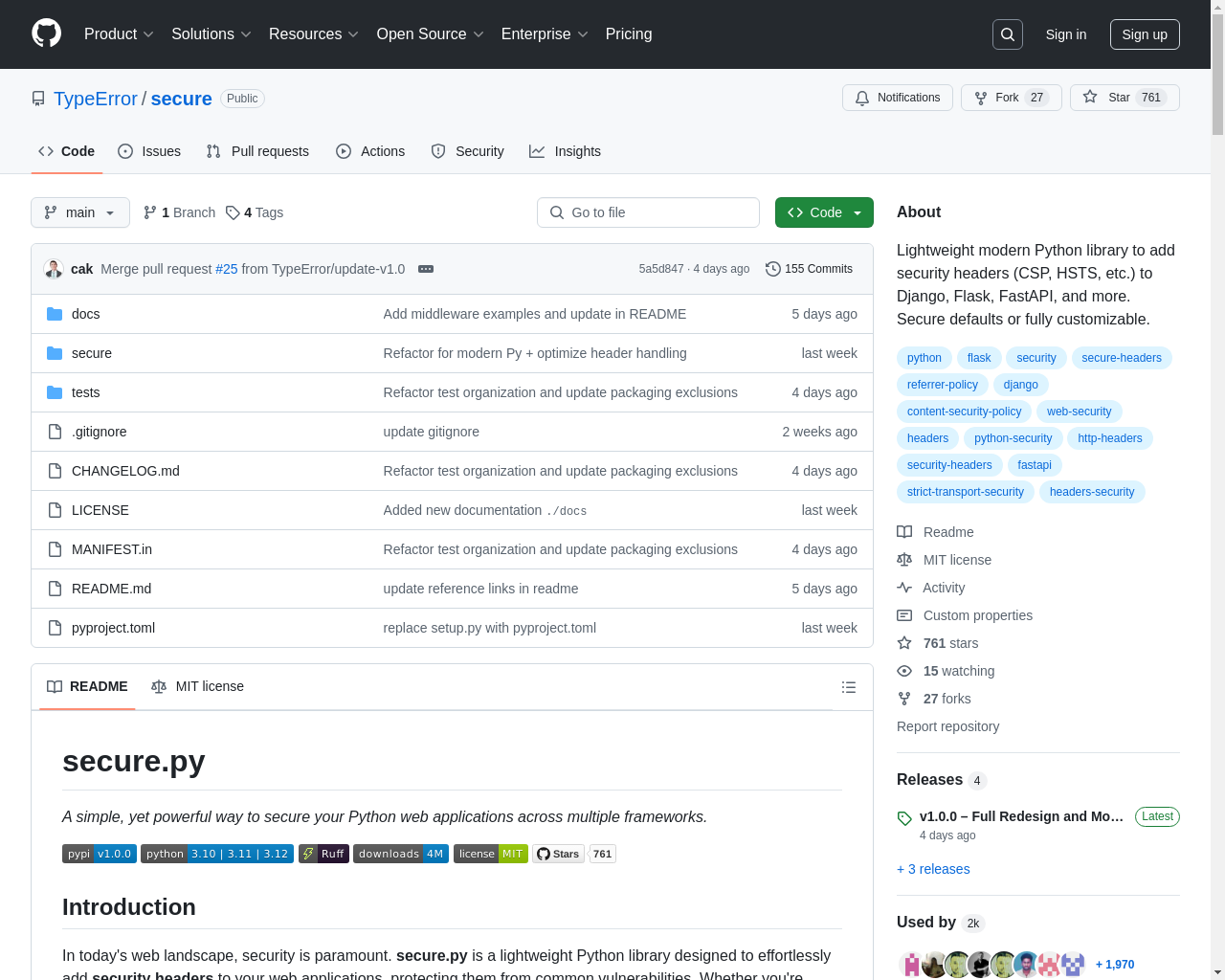

Highlight 1
Provides out-of-the-box security presets which allow developers to easily apply either BASIC or STRICT configurations with just one line of code, greatly simplifying the setup process.
Highlight 2
Offers full customization options for security headers, empowering developers to tailor security measures according to the specific needs of their applications.
Highlight 3
Supports multiple web frameworks, enabling developers to integrate it seamlessly across Flask, Django, FastAPI, and Starlette, both synchronously and asynchronously.

Improvement 1
Offering more comprehensive documentation or tutorials could help new users understand and implement the library more effectively.
Improvement 2
Including additional features or more granular control for advanced users might enhance its appeal to developers looking for deeper customization.
Improvement 3
Implementing a way to visualize or check security headers in real-time could provide users with insightful metrics on their web application's security.
Product Functionality
Introduce a feature to validate the configuration of security headers to ensure they comply with industry standards.
UI & UX
Improve the user interface of the documentation to make navigation easier and more intuitive, possibly with a dedicated FAQ section.
SEO or Marketing
Enhance visibility through blogging about security-related topics and participate in community discussions to increase awareness of the library.
MultiLanguage Support
Consider providing documentation and key sections of the application in multiple languages to cater to a global audience.
- 1
What is secure.py used for?
secure.py is used to easily add essential HTTP security headers to web applications, helping to protect against common web vulnerabilities.
- 2
Which frameworks are supported by secure.py?
secure.py supports popular frameworks including Flask, Django, FastAPI, and Starlette, accommodating both synchronous and asynchronous applications.
- 3
What Python version is required to use secure.py?
secure.py requires Python 3.10 or higher.
